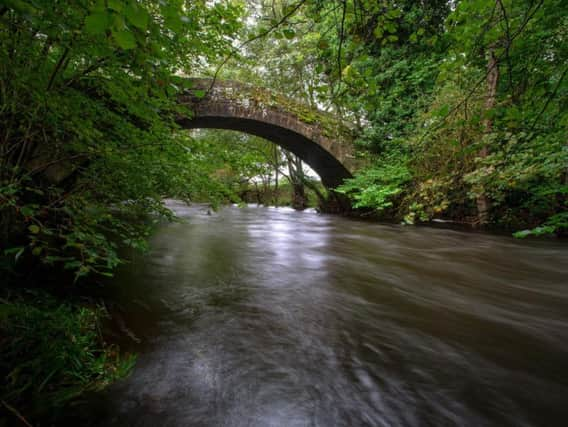How this picturesque packhorse bridge formed part of Yorkshire's trade routes


A packhorse bridge, it is narrow in width, intended to carry horses loaded with panniers across the water.
Packhorse bridges were often built on trade routes to allow goods to be transported between towns and villages of the UK, ahead of the development of turnpike roads and canals.
Advertisement
Hide AdAdvertisement
Hide AdThis Grade II-Listed example, north of Otley, is said to date from 1767, though its Historic England listing suggests it may well have been constructed earlier, in the 17th century, with repairs in the 1700s.
The Yorkshire statues and sculptures that have inspired a new exhibitionAccording to the Washburn Heritage Centre, dedicated to celebrating the history of the Washburn Valley, the river has powered milling through the ages and leats, goits and waterholding dams provide evidence of corn, fulling, cotton and flax mills.
Though the Westhouse Mill at Blubberhouses was historically significant - said to be one of the first in England to use an apprentice system for its work force - this packhorse bridge carried the routeway from Dob Park Mill across the river to Norwood and Fewston.
The first crossing of the river at this point was a paved ford, still visible, which formed part of a medieval monastic trade route between Otley and Nidderdale.
Advertisement
Hide AdAdvertisement
Hide AdA track descended to the ford and was used by many farmers for horses, carts and tractors, including to get to Otley Market.
It is thought the present bridge, known as Dob Park Bridge, was built after an earlier structure was swept away in a flood.
The Aire & Calder Navigation - a waterway filled with historyToday, the Washburn Valley, which forms part of the Nidderdale Area of Outstanding Natural Beauty is known for its four reservoirs, created to supply water to clean water to the growing city of Leeds in the late 19th century.
As such, its landscape of tranquillity, with woodland, moorland and flat valley tracks, makes it a popular destination for walkers, wildlife watchers and cyclists, as well as anglers and canoeists. And, as this bridge suggests, it’s packed with history too.
Technical details: Nikon D4, 17-35mm Nikkor, 1 sec @f16.